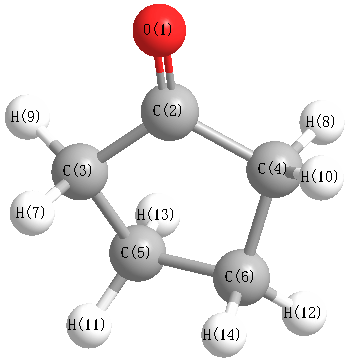.
| squib |
reference |
DOI |
| 1969Kim/Gwi:1815 |
Kim, H.; Gwinn, W. "Ring Puckering Five-Membered Rings. III. The Microwave Spectrum, Dipole Moment, and Structure of Cyclopentanone." Journal of Chemical Physics. 51, 1815-1819 (1969) |
10.1063/1.1672263 |
| 1971Vau:21 |
WE Vaughan, Digest of literature on dielectrics, v.33, 1969, 21 |
|
| 1976Hellwege(II/7) |
Hellwege, KH and AM Hellwege (ed.). Landolt-Bornstein: Group II: Atomic and Molecular Physics Volume 7: Structure Data of Free Polyatomic Molecules. Springer-Verlag. Berlin. 1976. |
|
| 1998Gus/Rui:163 |
M Gussoni, R Rui, G Zerbi "Electronic and relaxation contribution to linear molecular polarizability. An analysis of the experimental values" J. Mol. Struct. 447 (1998) 163-215 |
10.1016/S0022-2860(97)00292-5 |
| TRC |
Frenkel, M; Marsh, K.N.; Wilhoit, R.C.; Kabo, G.J.; Roganov, G.N.,Thermodynamics of Organic Compounds in the Gas State,Thermodynamics Research Center, College Station, TX, 1994 |
|
| webbook |
NIST Chemistry Webbook (http://webbook.nist.gov/chemistry) |
10.18434/T4D303 |











